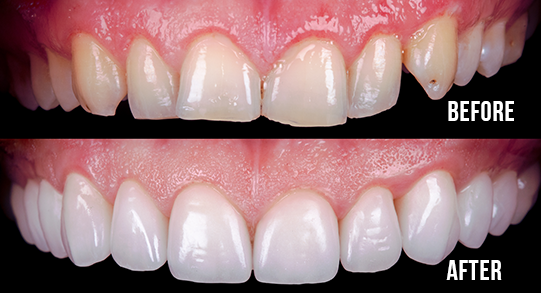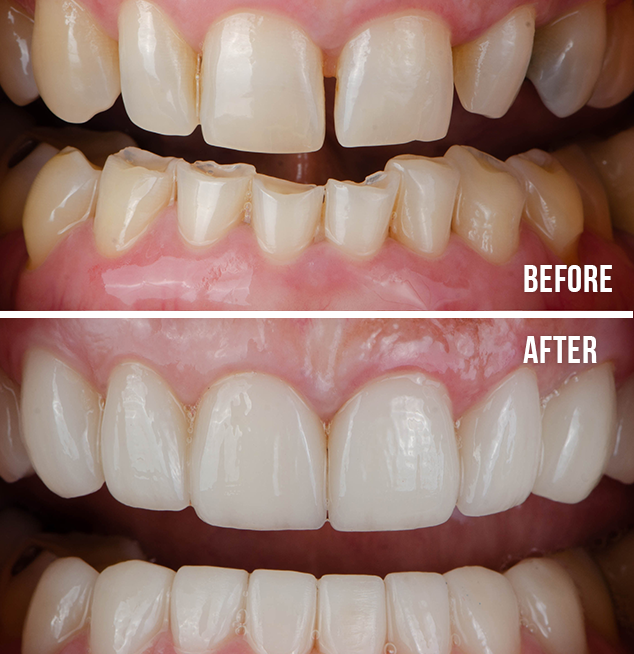
Composite bonding, also known as dental or tooth bonding, is a standard cosmetic treatment available at Thousand Smiles, London. It is particularly effective in addressing minor tooth damage, gaps, or imperfections. Whether it’s filling fractures, mending chips, bridging gaps, or masking discolouration, composite bonding can restore the aesthetics of your teeth.
During this procedure, our dentist will apply and shape a composite resin to the teeth, achieving a seamless blend with your natural tooth structure. The colour of the composite resin is meticulously matched to your natural teeth, ensuring a flawlessly natural result.
With Thousand Smiles’ expert composite bonding solutions, you’re on your way to a brighter and healthier smile. Enhance your smile today with our top-notch dental services in London.

You can carry out composite bonding in one dental visit. It is an effective and fast way to correct minor cosmetic issues. The dentist will harden the composite with curing light after its application to give a result that is comfortable to bite down.
The procedure is non-invasive, unlike the alternatives such as veneers and crowns that require removing a part of the tooth. Before the composite bonding application, the dentist will roughen the surface of the teeth to ensure the composite resin bonds to the tooth surface.

Composite bonding costs in the UK vary depending on the work needed. The cost of composite veneer ranges from £200 – £400 for each tooth. You will confirm the cost of your composite binding treatment during your clinical assessment.
Composite bonding is an option for whitening fillings and teeth. You can use it alongside teeth whitening treatments to get whiter, brighter teeth.
If you want to undergo a composite bonding procedure., the dentist may recommend teeth whitening treatment first. The composite resin will match your teeth’ colour, so we advise getting your preferred teeth shade before the bonding treatment. After you’ve placed composite resin on your teeth, you can’t whiten them.
Our dentist will first choose the resin colour that matches your teeth to ensure the resin attached to your teeth looks natural. The next step is preparing your tooth by slightly roughening the tooth surface, then coating it with an adhesive resin to make the resin remain on the tooth.
You may have receded gums if you have gum disease or previously had it. This leaves spaces between some teeth and the gum. You can undergo a composite bonding procedure to cover these spaces, but if you’re still suffering from gum disease, the dentist will treat it before any other dental procedure.

The common alternatives to composite bonding are
A dental veneer is a thin custom-made moulding bonded to the front surface of a tooth. Veneers cover gaps between the teeth in cases where orthodontic treatment may be unsuitable.
A crown is a tooth-shaped cap placed on the visible part of the tooth. The crown will function and feel like the natural teeth. If you opt for a porcelain crown, the result will be virtually indistinguishable from your natural teeth.
These alternatives cause a degree of damage to the teeth. While veneers are a common option that can last for several years, they are made from porcelain which requires filing down the teeth to make it fit. Filing down a tooth can cause permanent damage. This also applies to fitting a crown, as the dentist needs to remove some healthy parts of the tooth.
Composite bonding is a non-invasive and less expensive procedure, and the bonded tooth is easily repairable when broken or damaged.

Composite edge bonding allows slight changes to the shape or length of the natural teeth., but composite veneers cover the entire front surface of the teeth, which covers discolouration and changes in teeth shape.
The dentist will discuss your desired result and evaluate your options at your consultation. In some cases, one of the options is a better fit, depending on the teeth’ position and condition. Your bite may also determine which is the better option.
The number of teeth you will treat depends on your desired result. We often recommend a minimum of six upper teeth to ensure a functional and symmetrical result. During your consultation, our dentist will take photos of your teeth from different angles to see which teeth in your smile differ from the others.
In some cases, performing composite bonding on the lower teeth is possible. Our dentist will assess the space available for composite bonding. You can place composite material on the lower teeth, but a thorough evaluation of your bite is needed for fully functional veneers.
We usually advise getting teeth whitening treatment before composite bonding because you can have the new teeth shade and match the composite bonding.
You can call Thousand Smiles on 020 8050 0280 to speak with our dental professional about your options and to know if composite bonding is right for you.